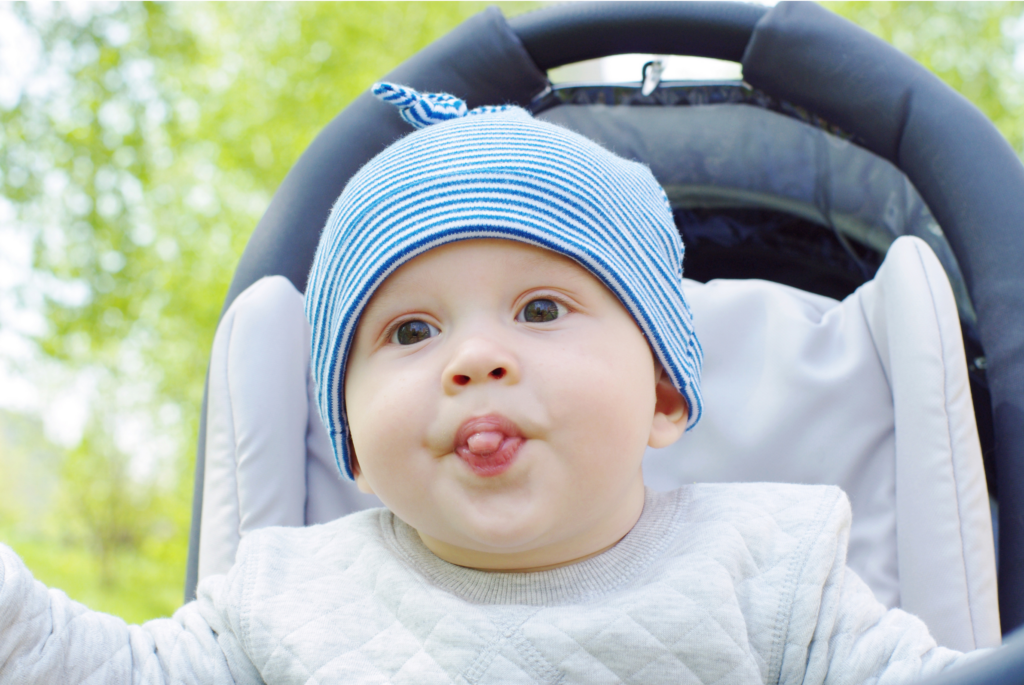Quick pointers for BLW:
Baby Led Weaning, Based on the interest and questions I got off the previous post, I thought of quickly penning down our journey leading to BLW and what worked for us.
When to Start BLW Baby led Weaning for your Baby?
To start off, below are the pre-requisites for starting your baby on BLW-
- Must be six months/ 180 days old
- Should have lost “Tongue-Thrust Reflex” – This is basically a natural reflex the babies have to push out foreign objects from their mouth. You can see this reflex in action when babies tongue is touched or depressed in any way by a solid and semisolid object, like a spoon. Losing this reflex is very important for starting solids.
- Must be able to sit unassisted for a short time and have good neck control.
- While this is optional and not an absolute requirement, from my experience baby showing interest in your food while you eat and trying to take objects to their mouth is definitely a bonus that’ll make things easier.

S reached most of these requirements just before he turned 6 months and to make things easier, I handed him raw carrots (peeled and washed with boiled drinking water) and other safe raw veggies to explore and mouth on his own, so when I introduced actual solids, he automatically tried taking it to his mouth and chewing on it.
Some of other important topics to be aware of prior to starting:
Foods to avoid: As an overview, avoid sugar, salt, honey, whole nuts, raw and undercooked meat and eggs and cheese made from unpasteurized milk. Apart from these, any food that is of the right size and consistency can be given. Please try to avoid processed foods as well.
GAGGING
While it is definitely scary watching your baby gag on a piece of food, please try to stay calm and let your baby figure it out. Read up on the differences between gagging and choking prior to starting your solids journey. Watching videos to understand the difference between the two definitely helps. Unlike adults, the gag reflex for babies is around 3/4th back of their tongue, not all the way back. It moves further back as they grow older.

If the baby is gagging, as long as we stay calm and don’t interfere, the baby will learn how to maneuver the bigger pieces around their mouth and spit it out or chew further depending on the item. it also helps them understand how much to chew and the different food textures. That said if the gagging is excessive, kindly note down the food item and avoid it for a couple of weeks until the baby is able to handle that texture better. You can also offer some water in an open cup or a straw cup once the baby has stopped gagging to help clean out any residual food pieces.
With S, I noticed lesser gagging episodes as the days went by and as long as I stayed calm with no reaction, he learnt how to deal with the food item on his own. He would actually try picking up the next piece off his highchair the second he stopped gagging so I don’t think it bothered him too much.
Consistency of the food for starting BLW
For a 6 month old baby, try to offer food in a soft consistency where it should slightly squish if you try pressing softly between your fingers. Baby should be able to chew it with their gums.
Size of the food for starting BLW
6 month olds have the palmer grasp, which basically means they hold objects with their palm wrapping their fingers around it. Hence to avoid any choking hazard and to make it easier for the baby to hold and eat, offer finger length pieces of food that are not too wide. The baby would be chewing off the excess that protrudes from their hand (yes the remaining part will technically be wasted as they cannot eat it). As the baby develops pincer grasp (around 9 months of age), we can start cutting it into smaller pieces for them to pick up.
What to give Vegetables or Fruits?
Veggies before fruits: Babies naturally have a tendency towards sweet foods. So to avoid a preference setting in early for this, it is recommended to offer veggies during the initial days. For S, I offered a fruit in intervals of every 4-5 days and that worked for us. You can introduce it a lot later or earlier based on what works for you.
How to offer/ serve to your Baby?
Offer 1-2 pieces at a time to not overwhelm your baby. You can wait for them to get done with the piece they are holding before offering the next one or replacing it. If you’ve decided to go the BLW approach, you can start off with finger foods of the right size and consistency. If offering porridges, you can make it thick to almost a halwa consistency and preload on spoons Check our posts for visual ideas on how to serve.
I used to initially hold out the piece in my hand for my son to grab and eat and then slowly transitioned to picking up from the highchair tray over a week. You can try both and see what works for you.
Next would be to learn what foods to offer and how to offer them. I’ll try putting up a more elaborate post on this.
For an overview, you can pretty much offer most food items the family eats. This includes vegetables like carrot, broccoli, capsicum, chow chow, etc. Fruits like banana, avocado, steamed apples, steamed pears, papaya, etc can be offered. Family foods like idli, dosa, aloo paratha, etc. Keep in mind, all these foods have to be in the right size and consistency before offering. You can refer to our BLW vegetables and fruits section for ideas on serving these and our recipes section for ideas on family foods.
I covered most of the basics here. Did you face a phase when your baby would eat only sweet foods? I would love to know how you handled it. Do share below 🙂




